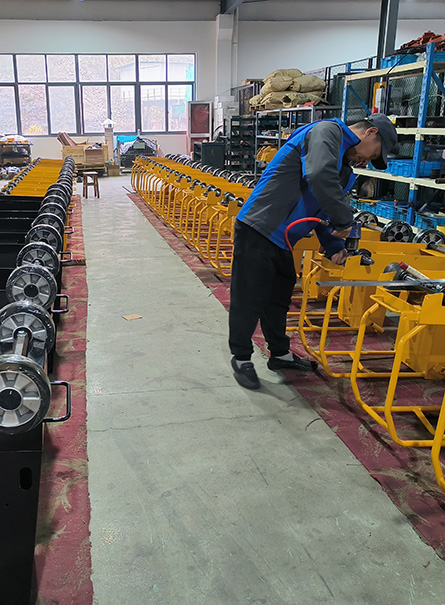In the realm of construction, the manipulation of reinforcing bars stands as a crucial task. Such bars, often required to adopt various configurations, play a pivotal role in enhancing the structural integrity of concrete structures. The underlying principle here mirrors the act of snapping a twig - applying pressure causes a divergent movement in the material's particles, akin to the behavior of reinforcing steel in concrete under tensile stress. This phenomenon underscores the necessity for specific bending patterns in these reinforcing rods.
Delving into the heart of this article, our focus shifts to the myriad of machines adept at bending rebars, and the criteria for selecting the most appropriate one.
Commencing with pneumatic bending, its preeminent merit lies in its rapid execution. Offering a significant speed advantage over hydraulic counterparts, these machines boast flexibility in placement, even in unconventional orientations.
These devices comprise a steel cylinder, a pressure gauge, and a rod. The process involves setting the rod on the pneumatic cylinder, adjusting the pressure manually, and marking the desired bending point. The application of pressure, monitored by the gauge, facilitates the bending of the rod, conforming it to specific requirements.
Manual Rod Bending Machine
Contrastingly, manual rod bending machines operate through simpler mechanics, involving a tie rod revolving around a cylinder with manual force application. While economically viable, their utility is somewhat constrained, particularly in larger-scale operations. The user engages the machine by anchoring it securely, inserting the bar into clamps, and manually manipulating the rod to achieve the desired bend angle.
CNC Rod Bending Machine
Transitioning to CNC rod bending machines, these are adept at shaping steel bars into various complex forms - triangles, quadrilaterals, pentagons, rings, and other polygonal shapes. Especially suited for major projects like bridges and tunnels, these machines combine manual loading with automated bending functionalities, ensuring consistency in angle and form. Usage involves setting the shape, placing the rod, and activating the machine via a foot pedal, with the bending action executed by a rotating disc.
Hydraulic Rod Bending Machine
The hydraulic bar bending machine, an asset in construction and masonry, can bend bars to various angles up to 180°. Its automation enables pre-setting of multiple bending angles for successive operations, a feature particularly advantageous for producing stirrup rings and handling large quantities of steel. Unlike the CNC machine, it utilizes steel pins moving along a curved trajectory to achieve the bending.
Hydraulic Portable Rod Bending Machine
For on-the-go requirements, the portable hydraulic bender, encased in a robust iron body with a plastic covering, offers mobility and versatility. Suitable for tasks not demanding extensive bar bending, its operation involves plugging into a power source, placing the rebar in the clamps, and activating the trigger to achieve the desired bend. This machine also serves to rectify bent rebars.
Automatic Rod Bending Machine
Finally, the automatic rod bending machine, governed by a Programmable Logic Controller (PLC), delivers precision in bending angles. Ideal for large-scale, repetitive bending tasks, this machine enhances efficiency and consistency.
Conclusions
In summary, for extensive bending operations, the automatic or CNC rod bending machine emerges as the prime choice, offering speed and cost-effectiveness. Conversely, for smaller-scale projects, pneumatic or portable hydraulic machines suffice. Each type, with its distinct features and capabilities, caters to specific bending needs in the construction sector.


